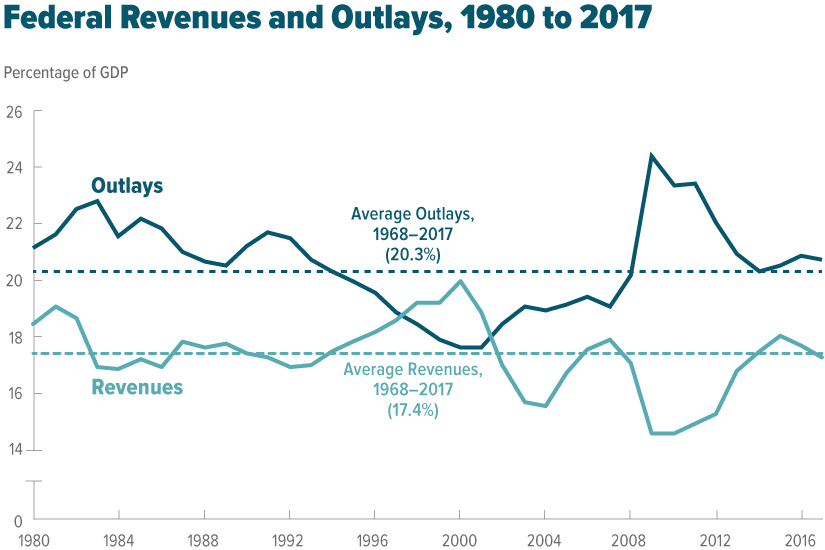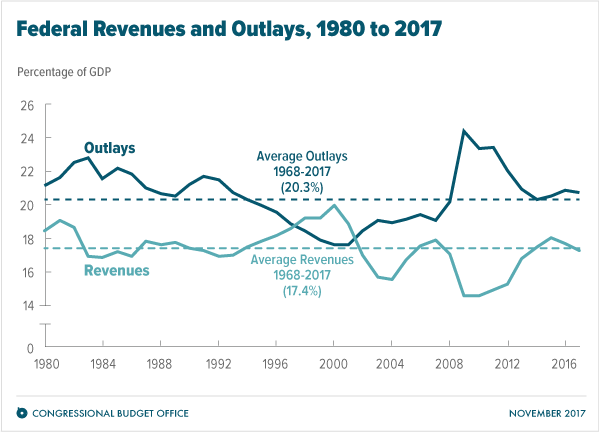from the Congressional Budget Office
In fiscal year 2017, the budget deficit totaled $666 billion – $80 billion more than the shortfall recorded in 2016. Measured as a share of GDP, the deficit increased to 3.5 percent in 2017, up from 3.2 percent in 2016 and 2.4 percent in 2015.

In fiscal year 2017, which ended on September 30, the federal budget deficit totaled $666 billion— $80 billion more than the shortfall recorded in 2016. The deficit increased to 3.5 percent of the nation’s gross domestic product (GDP) in 2017, up from 3.2 percent in 2016 and 2.4 percent in 2015—but far lower than it was in 2009, when the deficit reached 9.8 percent of GDP.

In 2017, the government’s revenues amounted to $3.3 trillion—$48 billion (or 1 percent) more than receipts recorded in 2016. Revenues fell from 17.7 percent of GDP in 2016 to 17.3 percent in 2017, dropping just below the average (17.4 percent) of the past 50 years (see the figure below).

Net spending by the government was $4.0 trillion in 2017—$128 billion (or about 3 percent) more than spending in 2016. Outlays amounted to 20.8 percent of GDP in 2017, compared with 20.9 percent in 2016 and well below the 24.4 percent recorded in 2009 but still above the 50-year average of 20.3 percent.
Total Receipts: Up by 1 Percent in Fiscal Year 2017
Receipts from all major sources except payroll taxes declined as a percentage of GDP:









Leave A Comment